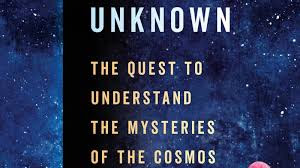 I sat down this morning to do my blog and could not think of a thing to say. As this is Wednesday, sci-tech day for this site, I thought I'd do my yearly Dark Energy/Dark Matter summary, to determine if we are any closer to identifying what they really are.
I sat down this morning to do my blog and could not think of a thing to say. As this is Wednesday, sci-tech day for this site, I thought I'd do my yearly Dark Energy/Dark Matter summary, to determine if we are any closer to identifying what they really are. “I’m sorry, but I just can’t stand it anymore. This massive, outrageous, pork-filled Congressional spending bill is a disgusting abomination,” the world’s richest man posted on X. “Shame on those who voted for it: you know you did wrong. You know it.”
Having only slipped through the House of Representatives by the narrowest of margins on May 22, it now faces a treacherous path through the upper chamber, with Republican fiscal hawks, MAGA populists, and moderates alike raising objections to different aspects of its tax and spending provisions.
- More evidence for Dark Energy changing with time, featuring Becky Smethurst of the University of Oxford, 32 minutes long.
- New Dark Matter Theory, 11 minutes.
- One thing that immediately strikes you is that the percentages shown in these pie charts are not uniform, but it seems inconceivable that there are more than 20 times more stuff out there that we know nothing much about. Here is one comparison:
- We only see 4.9% of what is around us. These dark things are also there, except you can't confirm them. You think religion is made of folk tales? Cosmology is similarly soft.
- Further, there are other points of view.
- Last year, the University of Ottawa revealed research that suggested our universe has no dark matter.
- Way back in 2019, this video said dark energy might not exist after all.
- Is there any real world value to research on dark energy and matter? Well, you can read this article. Doesn't look like much.
- So how much money is annually spent on this research? Said Google AI Overview:
Yes, the Trump administration has been involved in efforts to cut funding for scientific research, and this has potentially impacted dark energy and dark matter research.
- China's DAMPE mission is designed to indirectly detect weakly interacting massive particles (WIMPs), a hypothetical dark matter candidate.
- It seeks a signal from the decay of WIMPs, which are thought to make up a significant portion of dark matter.
- The Dark Energy Survey is a large international collaboration that utilizes the Dark Energy Camera on the Blanco Telescope in Chile to study the night sky.
- This survey aims to precisely map the distribution of galaxies and measure the effects of dark energy on the expansion of the universe.
- Funding for the DES project comes from various countries, including the U.S., the U.K., and Spain.
- A European space telescope, Euclid, is designed to study dark energy and map the distribution of galaxies and clusters, helping scientists understand the effects of dark energy on the universe's expansion.
- Scientists from around the world are using networks of magnetometers, like GNOME, to search for dark matter, with magnetometers distributed in countries like Germany, Serbia, and South Korea.
- Lund University in Sweden is developing new techniques to analyze large datasets from experiments like CERN to search for clues about dark matter.
- Researchers in the UK, including those at STFC RAL Space and Imperial College London, are investigating the possibility that black holes could be a source of dark energy.
-


















Comments
Post a Comment